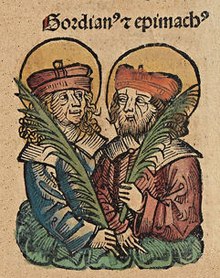Year 362 (CCCLXII) was a common year starting on Tuesday of the Julian calendar. At the time, it was known as the Year of the Consulship of Mamertinus and Nevitta. The denomination 362 for this year has been used since the early medieval period, when the Anno Domini calendar era became the prevalent method in Europe for naming years.
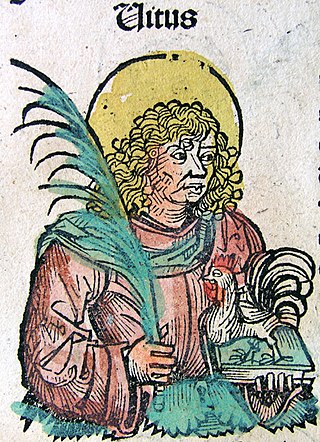
Vitus, whose name is sometimes rendered Guy or Guido, was a Christian martyr from Sicily. His surviving hagiography is pure legend. The dates of his actual life are unknown. He has for long been tied to the Sicilian martyrs Modestus and Crescentia but in the earliest sources it is clear that these were originally different traditions that later became combined. The figures of Modestus and Crescentia are probably fictitious.
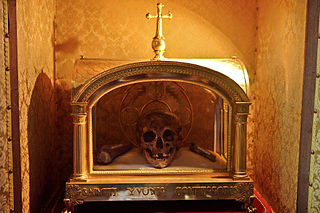
In religion, a relic is an object or article of religious significance from the past. It usually consists of the physical remains or personal effects of a saint or other person preserved for the purpose of veneration as a tangible memorial. Relics are an important aspect of some forms of Buddhism, Christianity, Islam, shamanism, and many other religions. Relic derives from the Latin reliquiae, meaning "remains", and a form of the Latin verb relinquere, to "leave behind, or abandon". A reliquary is a shrine that houses one or more religious relics.
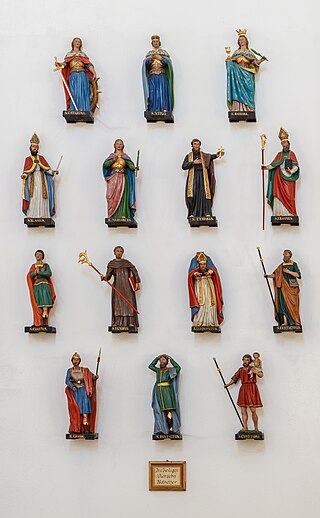
The Fourteen Holy Helpers are a group of saints venerated together by Catholics because their intercession is believed to be particularly effective, especially against various diseases. This group of Nothelfer originated in the 14th century at first in the Rhineland, largely as a result of the epidemic that became known as the Black Death.
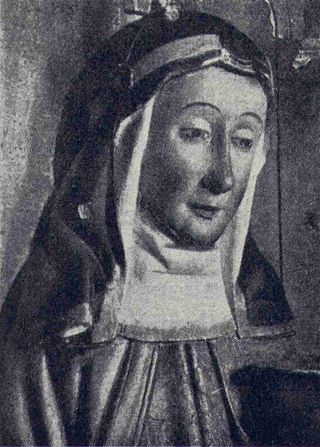
Catherine of Sweden, Katarina av Vadstena, Catherine of Vadstena or Katarina Ulfsdotter was a Swedish noblewoman. She is venerated as a saint in the Roman Catholic Church. Her father was Ulf Gudmarsson, Lord of Ulvåsa, and her mother was Saint Bridget of Sweden.

Odile of Alsace, also known as Odilia and Ottilia, born c. 662 - c. 720 at Mont Sainte-Odile), is a saint venerated in the Catholic Church and the Eastern Orthodox Church. She is a patroness saint of good eyesight and of the region of Alsace

Gotthard, also known as Gothard or Godehard the Bishop, was a German bishop venerated as a saint.

Leonard of Noblac, is a Frankish saint closely associated with the town and abbey of Saint-Léonard-de-Noblat, in Haute-Vienne, in the Limousin region of France. He was converted to Christianity along with the king, at Christmas 496. Leonard became a hermit in the forest of Limousin, where he gathered a number of followers. Leonard or Lienard became one of the most venerated saints of the late Middle Ages. His intercession was credited with miracles for the release of prisoners, women in labour and the diseases of cattle.

May 8 – Eastern Orthodox Church calendar – May 10

Fabius Claudius Gordianus Fulgentius, also known as Fulgentius of Ruspe was a North African Christian prelate who served as Bishop of Ruspe, in modern-day Tunisia, during the 5th and 6th century. He has been venerated as a saint.

Saint Randoald was prior of the Benedictine Moutier-Grandval Abbey under Germanus of Granfelden. He is recognised as a saint in the Catholic and Eastern Orthodox Churches

Hemma of Gurk, also called Emma of Gurk, was a noblewoman and founder of several churches and monasteries in the Duchy of Carinthia. Buried at Gurk Cathedral since 1174, she was beatified on 21 November 1287 and canonised on 5 January 1938 by Pope Pius XI. Her feast day is 27 June. Hemma is venerated as a saint by both the Catholic Church and the Eastern Orthodox Church, and as patroness of the current Austrian state of Carinthia.
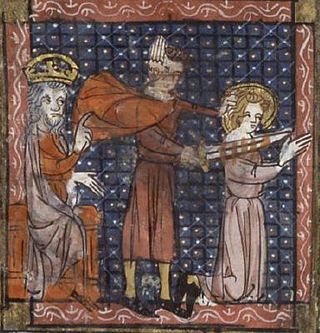
Gordianus was a Roman martyr who was killed during the reign of Julian the Apostate, and is commemorated on 10 May.
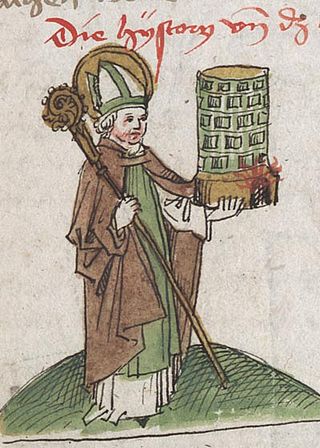
Epimachus of Alexandria was a Roman martyr who died in 250 during the Decian persecution. He and his companions—Alexander, Ammonarion, Mercuria, Dionysia and other women—were beheaded at Alexandria. They are commemorated on 12 December.

Magnus of Füssen, otherwise Magnoald or Mang, was a missionary saint in southern Germany, also known as the Apostle of the Allgäu. He is believed to have been a contemporary either of Gall or of Boniface and is venerated as the founder of St. Mang's Abbey, Füssen.
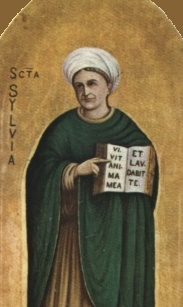
Silvia, or Sylvia, was the mother of Gregory the Great. She is venerated as a saint by the Catholic Church and Eastern Orthodox Church, which names her a patroness of pregnant women.
Epimachus of Pelusium was an Egyptian martyr.
Saint Altfrid was a leading figure in Germany in the ninth century. A Benedictine monk, he became Bishop of Hildesheim, and founded Essen Abbey. He was also a close royal adviser to the East Frankish King Louis the German.

The Princely Abbey of Kempten was an ecclesiastical principality of the Holy Roman Empire for centuries until it was annexed to the Electorate of Bavaria in the course of the German mediatization in 1803.
Saint Gordianus, who with several companions was martyred in Pontus or Galatia.
